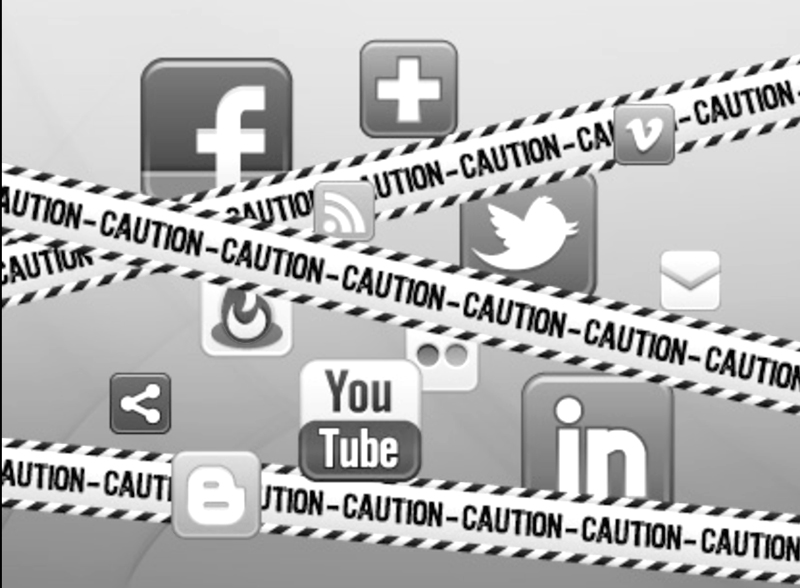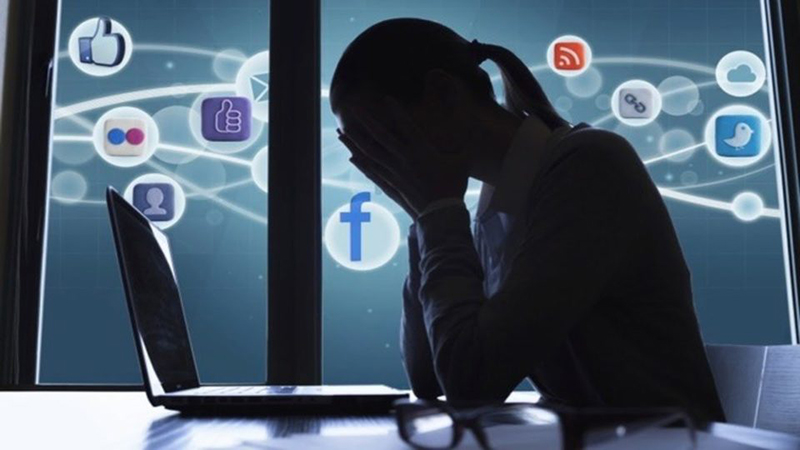Social media’s rising effect on mental health
by Alexandria Zine
Over the last decade, the surfeit of digital technology and outlets to browse have increased the likelihood of widening one’s social circle. However, research finds that individuals are further apart than ever. The phrase “quality over quantity” is certainly applicable regarding social media’s intrusion on daily life.
The NBC news article, Social media linked to rise in mental health disorders in teens, survey finds includes the American Psychological Association’s (APA) research emphasizing teens’ plummeting mental health. The number of teens combating mental illness in 2008 jumped 71% by 2017. In reviewing this research, Jean Twenge—a San Diego University professor and author of “iGen” book— finds this augmentation connected to social media’s greater involvement.

Image: Use social media with caution. Courtesy of: medium.com
It is the increase in adolescents’ vulnerability to developing psychological disorders and declining self-esteem based on content and frequency of engagement with this material. A ‘Common Sense Media’ study finds mobile devices to be major distractions. These results, contained in the NBC news article “More teens addicted to social media, prefer texting to talking”, encapsulate the generational hardships relating to social media. Approximately 57% of young adults lose attentiveness during study hours, 54% evade live encounters and 29% allow notifications to disrupt their sleep. Additionally, over 80% of the teenage part of these statistics use social media.
Cape Cod Community College’s (4Cs) student body is diverse in the age disparities, which is visible throughout campus activities. Adult learners appear to practice greater self-discipline in their social media use compared to dual enrollment students and recent high school graduates. Similarly, a research paper titled Social Media and the Cost of Caring from the Pew Research Center examines individual awareness of stress levels alongside the stress of social media. Some of this data includes: 57% of individuals have an acquaintance beginning a new job, 56% of people know of others changing homes and 50% of people know others that are hospitalized or severely injured. Receiving this information daily can unconsciously stress social media users.
Regardless of an individual’s stable living situation, this news dismays with thoughts of reversed circumstances. Daily use of these platforms heightens individual stress due to the flood of stimulation. This “social stress” or exposure to stressful life events can deteriorate the peace of mind that many strive for throughout their lives. Social media diverts individuals from achieving their goals by divesting their time and subliminally encouraging avoidance of live interactions. The research on social media use and the climb in those afflicted only determines potential links between the two variables.
In the NBC news article Social media linked to rise in mental health disorders in teens, survey finds, the stack of research displaying the rise in social media and mental illness does not declare certainties.
“We can’t say for certain that the rise we’re seeing is the direct result of social media use…For example, teens could have depressive or anxious symptoms and therefore spend more time on social media outlets to look for a way to connect,” said Aaron Fobian, an assistant professor of psychiatry at the University of Alabama at Birmingham and a clinical psychologist.

Image by: Cassie LeBel
Another research paper from the Pew Research Center, titled Teens, Social Media & Technology 2018, shows social media’s positives in the eyes of teens. About 40% of young adults said that social media is positive for reliable communication with friends and relatives. The extensive news and continuous updates on these platforms contributes to 16% of young adults with this positive regard and another 15% for the ability to find like-minded people. Lastly, 9% of teens find it suitable for entertainment, 7% for the liberation to express and 5% for the support of friends.
Ultimately, the impact of social media depends on individual boundaries and sensitivities. The multipurpose nature of this technology requires understanding self-limitations to protect one’s mental state from any or further damage. The connections made in the moments in and between classes are essential to the human experience. Technology was meant to refine human communication, but the beauty and fulfillment is in the simplicity of day to day meetings. Technology can either maximize or inhibit education and it is not always clear which is the case.
The Student Wellness Center is located in the Grossman Commons, Room 208 and is open Monday through Friday, from 8:30 AM until 4:30 PM. Faculty are available to hear any concerns and to assist as best as possible; contact [email protected] or use the TalkCampus app for 24/7 assistance. There are self-assessments at www.ulifeline.org and questionnaires with information sheets at cccc.caresforyou.org for self-understanding.
If you are struggling, please do yourself a favor and reach out for the help that you deserve.
Categories: Arts & Entertainment, Featured